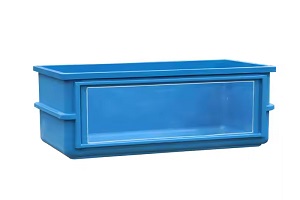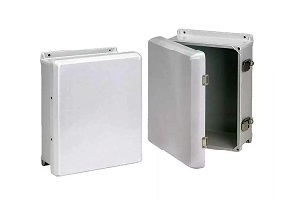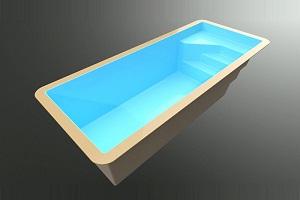- Home
- Fiberglass Hand Lay-Up
Fiberglass Hand Lay-Up Process and Manufacturer
Fiberglass Hand Lay-Up is a manual technique and the oldest FRP molding method for making FRP GRP composite products. Fiberglass Hand Lay-Up is a widely used molding process in the reinforced plastic industry, involving the manual placement of chopped strand or woven fiberglass mat into an open mold, followed by the application of resin. The mold is manually rolled to ensure even resin distribution and the elimination of air pockets. This technique, known for its simplicity and adaptability, allows for the creation of seamless, strong, and lightweight composite structures, making it ideal for various industries, including aerospace, marine, and construction.
Fiberglass Hand Lay-Up is especially suitable for small production runs and large parts like FRP vessels. The process leverages the key properties of polyester resin, which cures without the need for heat or pressure, allowing for easy molding and application to a variety of surfaces. This method has revolutionized numerous industries by providing enhanced structural strength and performance without added weight. It remains a valuable skill for producing customized, high-quality composite products, particularly in applications requiring durability, precision, and flexibility.
News
- Exploring the Benefits of Carbon Fiber Apparel
- How to Work with Carbon Fiber Successfully
- Carbon Fiber Suit: The Future of Lightweight Armor
- Is Carbon Fiber Armor the Future of Protection?
- Why White Carbon Fiber is Popular in Automotive Design
- Transparent Carbon Fiber Sheets: Strength Meets Clarity in Design
- Chopped Carbon Fiber Mat for Lightweight Reinforcement
- Carbon Fiber EG Hatch: Upgrade Your Civic Today
- The Benefits of Using Structural Carbon Fibre in Engineering
- How Many Layers of Layered Carbon Fiber Are Needed?
Simplifying Your Life: Key Functionalities

| Attribute | Details |
|---|---|
| Primary Material | Fiberglass, E-glass, Unsaturated Polyester Resin |
| Techniques Used | Hand Lay-Up, Spraying Up, Winding Filament Roving, Chopped Strand Mat (CSM) |
| Applications | - FRP Mold and Boats Surface Protection |
| - Fiberglass Surface Tissue | |
| - High Light Transmittance Fiberglass | |
| - FRP Products | |
| - Air Deflector for Trucks | |
| Resin Compatibility | VE, EP, UP |
| Appearance | Customizable Colors (RAL Colors) |
| Density | - Density: 20-90 g/square meter |
| Purity | - Gelcoat: 100% |
| - Polyester Resin: 99% | |
| Processing Services | Moulding, Lamination, Cutting, Welding, Punching, Decoiling |
| Special Features | - High Corrosion Resistance |
| - High Light Transmittance | |
| - Alkali Resistance | |
| - Smooth Surface | |
| - Durable Solutions | |
| Grade | Super Grade |
| MOQ (Minimum Order Quantity) | 5 Pieces |
| Place of Origin | Hebei, China |
| Brands | GangLong Fiberglass |
Thank you for your interest in our products. To receive our pricelist or for any inquiries, please fill out the form below. We will get back to you within 24 hours.
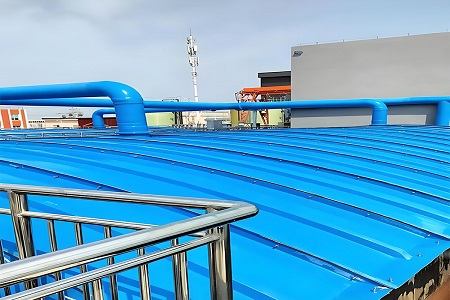
What is Fiberglass Hand Lay-Up Process?
Overview
The Fiberglass Hand Lay-Up process is a manual composite manufacturing technique that involves several meticulous steps to create high-quality composite structures. This method is known for its flexibility and precision, making it ideal for custom and low-volume production. The process ensures that fiberglass materials are properly integrated with resin to form durable, high-strength laminates.
Stages of the Process
Mold Preparation: The first step in the Fiberglass Hand Lay-Up process is to prepare the mold. This involves thoroughly cleaning the mold to remove any debris or residues that could affect the final product. A release agent, often a wax or silicone-based compound, is then applied to the mold surface to facilitate the easy removal of the finished part.
Gel Coating: Once the mold is prepared, a gel coat is applied. This gel coat provides a smooth, aesthetically pleasing surface finish and adds a layer of protection to the composite. It is crucial for achieving the desired surface quality and ensuring that the final product has a uniform appearance.
Lay-Up of Fiberglass: In this stage, fiberglass mats or woven roving are manually placed into the mold. The fiberglass is laid up in layers, with careful attention paid to the orientation and overlap of the fibers to enhance the structural integrity of the composite. The goal is to ensure uniform coverage and proper alignment of the fiberglass within the mold. This principle also applies to molded fiberglass insulation, where consistent placement of fiberglass ensures optimal thermal performance and efficiency in insulation applications.
Resin Application: After laying up the fiberglass, resin is applied to saturate the fibers. This step is critical as the resin bonds with the fiberglass and hardens to form a solid laminate. The resin is typically applied using brushes or rollers to ensure thorough impregnation of the fiberglass and to eliminate any air pockets that could weaken the composite.
Curing: Once the resin is applied, the composite is left to cure. This curing phase allows the resin to harden and set, forming a rigid and durable composite structure. The curing time can vary depending on the resin type and environmental conditions, but it is essential for achieving the desired strength and stability of the final product.
Finishing: The final stage involves trimming and post-processing the cured composite. This includes removing any excess material, sanding rough edges, and making any necessary adjustments to ensure the composite meets the required specifications. The finishing process ensures that the composite is ready for use or further processing.
Advantages and Disadvantages of Fiberglass Hand Lay-Up
Advantages
Cost-Effective
The Fiberglass Hand Lay-Up process is known for its lower initial tooling costs. Unlike more complex methods that require expensive automated machinery or specialized molds, hand lay-up uses simple tools and materials. This makes it an economical choice for small-scale production or prototype development.
Flexibility
One of the key benefits of Fiberglass Hand Lay-Up is its flexibility. This method is particularly well-suited for low-volume and custom applications. It allows for easy adjustments to the design and material specifications, making it ideal for creating bespoke or one-off products without the need for extensive retooling.
Surface Finish
Fiberglass Hand Lay-Up can achieve high-quality surface finishes when executed with proper technique. The manual application of resin and fiberglass allows for fine control over the final appearance, including the smoothness and overall aesthetic of the composite. This method can produce surfaces that meet high standards of visual and functional quality.
Disadvantages
Labor-Intensive
The Fiberglass Hand Lay-Up process is labor-intensive, requiring skilled technicians to manually place the fiberglass materials and apply the resin. This manual effort can increase production time and labor costs, especially for larger or more complex parts.
Inconsistencies
Potential inconsistencies are a drawback of Fiberglass Hand Lay-Up. Variations in fiber orientation and resin application can occur, leading to uneven strength and performance characteristics. These inconsistencies can impact the overall quality and reliability of the finished composite, requiring careful monitoring and quality control.
Time-Consuming
Compared to automated methods, Fiberglass Hand Lay-Up tends to be more time-consuming. The process involves multiple manual steps, including mold preparation, fiberglass placement, and resin application. These factors contribute to longer cycle times and extended production schedules, which may not be ideal for high-volume manufacturing.
FRP Hand Lay-Up Process
The Fiberglass Hand Lay-Up process is extensively used in the manufacturing of fiber-reinforced plastics (FRP), a category known for its exceptional strength and versatility. This method is particularly valuable in various applications where high performance and customized designs are essential.
Specific Applications of Hand Lay-Up in Fiber-Reinforced Plastics (FRP)
Marine Industry
In the marine sector, the Fiberglass Hand Lay-Up process is employed to produce robust and lightweight components such as boat hulls, decks, and interior panels. The manual application of fiberglass and resin ensures that the composite materials can be tailored to withstand the harsh marine environment, providing durability and resistance to water and corrosion.
Aerospace
The aerospace industry benefits from the Fiberglass Hand Lay-Up process for creating lightweight yet strong parts used in aircraft and spacecraft. Components such as fuselage panels, wing structures, and interior fittings are manufactured using hand lay-up due to its ability to produce complex shapes with high precision.
Construction
In construction, FRP hand lay-up is used to create structural components like beams, columns, and panels. This technique is particularly effective for producing fiberglass beams, which offer high strength and low weight, making them ideal for various structural applications.These components are valued for their strength-to-weight ratio, making them suitable for applications where reducing weight without compromising structural integrity is crucial.
Automotive
The automotive industry utilizes the Fiberglass Hand Lay-Up process for producing custom parts and prototypes. Components such as body panels, bumpers, and interior elements benefit from the flexibility and high-quality surface finish achievable with hand lay-up techniques.
Benefits of Using FRP in Various Industries
Strength-to-Weight Ratio
One of the primary advantages of using FRP in industries is its excellent strength-to-weight ratio. The Fiberglass Hand Lay-Up process allows for the creation of composites that are strong yet lightweight, which is essential in applications where reducing weight while maintaining strength is critical.
Durability
FRP components produced through hand lay-up are known for their durability. The combination of fiberglass reinforcement and resin creates a material that resists impacts, corrosion, and fatigue, making it suitable for demanding environments and long-lasting applications.
Customizability
The Fiberglass Hand Lay-Up process offers a high degree of customizability. This allows for the creation of complex and tailored designs that meet specific performance requirements. Industries benefit from the ability to produce custom shapes and sizes that are not feasible with other manufacturing methods.
Cost Considerations for Fiberglass Hand Lay-Up
When evaluating the Fiberglass Hand Lay-Up process, several cost factors come into play that can significantly influence the overall expense. Understanding these considerations helps in budgeting and making informed decisions about whether this method suits your needs.
Factors Affecting Cost
Material Costs: The choice of materials is a primary cost determinant in the Fiberglass Hand Lay-Up process. The type of fiberglass used—such as chopped strands, mats, or woven roving—can vary in price. For example, chopped strand mat is often selected for its versatility and cost-effectiveness, making it a popular choice in various applications where performance and budget are key considerations. Additionally, the selection of resin, including polyester, vinyl ester, or epoxy, impacts costs. High-performance resins and specialized fiberglass types can increase material expenses.
Labor Costs: The Fiberglass Hand Lay-Up process is labor-intensive, requiring skilled technicians to manually place fiberglass layers and apply resin. Labor costs can accumulate due to the need for skilled personnel who can ensure consistent quality and efficiency. The complexity of the parts being produced also affects labor time and cost.
Tooling Costs: Tooling costs involve the preparation and maintenance of molds. While the initial investment for mold creation can be relatively low, there are ongoing costs associated with mold maintenance and potential repairs. Custom molds or complex shapes may further increase tooling expenses.
Cost-Effectiveness
Comparison with Other Composite Manufacturing Methods: The Fiberglass Hand Lay-Up method is often considered cost-effective for low to moderate production volumes. Its lower initial tooling costs and flexibility make it an attractive option for prototype and custom parts. However, for high-volume production, other methods like spray-up or automated processes may offer better cost efficiency due to their higher speed and reduced labor requirements.
Fiberglass Hand Lay-Up: Fiberglass Material Selection
The fiberglass hand lay-up process is a traditional yet widely-used technique for creating composite parts and structures. This method involves manually laying fiberglass materials into a mold, followed by the application of resin, which saturates the fibers to form a hardened composite after curing. Choosing the right type of fiberglass materials is crucial to ensure the final product meets the desired strength, weight, durability, and flexibility requirements.
Types of Fiberglass Materials
Fiberglass Mat: Fiberglass mats consist of short glass fibers that are randomly oriented and bound together with a binder. They are affordable, easy to work with, and provide adequate strength for many applications. However, fiberglass mats have lower structural strength compared to other forms, making them suitable for non-structural or secondary applications, such as cosmetic panels or insulation layers.
Fiberglass Cloth: Fiberglass cloth, also known as woven roving, is made from continuous fiberglass strands woven into a cloth-like material. The woven structure provides better structural integrity, higher tensile strength, and increased durability compared to fiberglass mats. This makes it suitable for structural components like boat hulls, car bodies, and other parts requiring higher strength.
Fiberglass Tape: Similar in structure to fiberglass cloth but available in narrow widths, fiberglass tape is often used for reinforcing joints and seams. It is easy to apply, especially in small areas, and ensures strength in these critical regions, enhancing the overall durability of the part.
Fiberglass Veil: This is a fine, non-woven fiberglass layer that is typically used as a surface layer to improve the finish and appearance of a composite part. Fiberglass veil is ideal for enhancing the aesthetic appeal of visible surfaces, reducing print-through of underlying layers, and providing a smoother finish.
Factors in Fiberglass Material Selection
Strength Requirements: Applications that require higher strength and durability, like structural parts, typically use woven fiberglass cloth or roving. For less demanding applications, fiberglass mat or veil may suffice.
Weight Considerations: Fiberglass cloth tends to be lighter than fiberglass mat, making it preferable for parts where weight reduction is essential.
Flexibility and Conformability: Fiberglass mats conform better to complex shapes and curves, which is helpful in applications with intricate mold designs.
Surface Finish: If a smooth, high-quality surface is desired, fiberglass veil can be applied as the top layer to provide a fine, even finish with minimal texture.
Cost Efficiency: For budget-sensitive projects, fiberglass mat offers a cost-effective solution, though it sacrifices some strength compared to cloth or tape.
Selecting the appropriate fiberglass material for a hand lay-up project depends on the specific requirements of the application, including strength, weight, flexibility, finish, and budget. By carefully evaluating these factors, manufacturers can achieve the best balance of performance and cost in their composite structures.
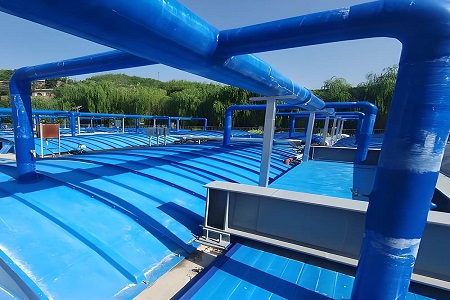
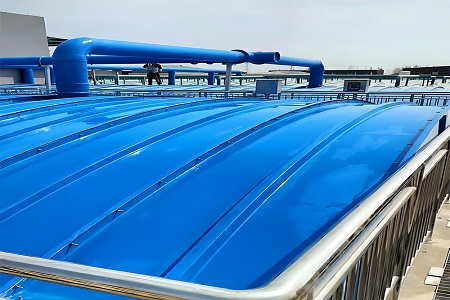
Features of Fiberglass Hand Lay-Up
The fiberglass hand lay-up method is one of the simplest and most versatile processes for manufacturing fiberglass-reinforced plastic (FRP) composites. This technique is known for its adaptability, cost-effectiveness in certain applications, and capability to create complex shapes. Here are the key features of the fiberglass hand lay-up process:
1. Manual Process
- The hand lay-up process relies heavily on manual labor, where technicians manually lay fiberglass reinforcement materials into a mold.
- Resin is applied by hand using brushes or rollers to saturate the fiberglass layers, which are then pressed or rolled to remove air bubbles and ensure good adhesion.
2. Low Tooling Costs
- Compared to other composite manufacturing techniques, the hand lay-up process requires minimal tooling, typically only the mold itself.
- This makes it an affordable choice for small production runs or prototyping, where extensive tooling is not economically feasible.
3. High Flexibility in Design and Shape
- Hand lay-up is highly adaptable to a wide variety of shapes and sizes, making it ideal for complex geometries that would be difficult to produce with automated methods.
- The method can accommodate intricate details and contours, which is why it’s frequently used in industries like marine, automotive, and aerospace for custom or complex-shaped parts.
4. Ability to Use Various Fiberglass Materials
- Different types of fiberglass reinforcement (such as cloth, mat, tape, or veil) can be used to tailor the mechanical properties of the final product.
- Layers can be added or customized based on the strength, flexibility, and weight requirements, allowing for a highly customizable composite structure.
5. Control Over Fiber Orientation and Thickness
- With hand lay-up, layers can be manually oriented in specific directions to meet structural requirements, enabling control over the fiber orientation and thickness of the final part.
- This feature is beneficial for creating parts that need directional strength or stiffness.
6. No Specialized Equipment Required
- The basic hand lay-up process does not require expensive machinery, relying instead on basic tools like brushes, rollers, and protective equipment.
- This makes the technique accessible, especially for smaller facilities or businesses without advanced equipment.
7. Moderate Production Speed
- Hand lay-up is slower than automated methods like spray-up or injection molding, making it better suited for small to medium production volumes.
- Curing times depend on the type of resin and environmental conditions, and each layer requires thorough resin saturation and air removal.
8. High Labor Dependence
- The process is labor-intensive, and the quality of the final part can vary based on the skill of the technician.
- Skilled workers are required to ensure proper layer placement, resin distribution, and air bubble removal, which directly affect the quality and durability of the part.
9. Varied Surface Finishes
- While the inner surface quality may vary based on workmanship, the outer surface can be made smooth or textured by applying a release agent or gel coat in the mold.
- This can improve the aesthetic quality of visible parts and add a layer of protection against environmental damage.
10. Suitable for Both Small and Large Parts
- Hand lay-up is adaptable for both small parts (like vehicle components) and larger structures (like boat hulls or large panels).
- Its versatility in part size makes it a valuable method across different applications, from single-piece prototypes to larger assemblies.
11. Resin Compatibility
- A wide range of resins (like polyester, epoxy, and vinyl ester) can be used in the hand lay-up process, allowing manufacturers to select the best resin for strength, durability, and environmental resistance.
The fiberglass hand lay-up process is an accessible and versatile method ideal for low to moderate production runs, complex shapes, and custom parts. However, it requires skilled labor for quality results, and it is generally less efficient for high-volume production compared to automated methods.
Curing of Fiberglass Hand Lay-Up
Curing is a critical step in the fiberglass hand lay-up process, where the resin hardens, bonding with the fiberglass reinforcement to create a strong, durable composite structure. This process transforms the liquid resin into a solid, durable matrix, locking the fibers in place and giving the composite its final mechanical properties. Here’s an overview of the curing process and factors to consider in fiberglass hand lay-up:
1. Resin and Hardener Selection
- Polyester Resin: Often used for its affordability and ease of handling, polyester resin typically cures at room temperature with the addition of a catalyst, like methyl ethyl ketone peroxide (MEKP).
- Epoxy Resin: Known for its superior strength and durability, epoxy resins require a specific hardener and have a longer curing time. They are commonly used in applications requiring high structural performance.
- Vinyl Ester Resin: Offers higher chemical and heat resistance, suitable for parts exposed to harsh environments. Curing is similar to polyester but provides enhanced durability.
2. Room Temperature Curing
- For many hand lay-up applications, curing takes place at room temperature. This is suitable for polyester and vinyl ester resins and can be more convenient and cost-effective than using ovens.
- However, room temperature curing can lead to variations in the final part properties, depending on the ambient temperature and humidity.
3. Controlled Curing with Heat (Post-Curing)
- Post-curing involves applying controlled heat after the initial cure, often in an oven, to enhance the mechanical properties and thermal resistance of the composite.
- Post-curing at elevated temperatures (typically 60°C–80°C for polyester and around 120°C for epoxy) can improve the material’s strength, chemical resistance, and stability.
- Post-curing is particularly beneficial for epoxy resins, as it can maximize their structural and thermal properties.
4. Curing Time and Factors Influencing It
- Catalyst/Hardener Amount: The amount of catalyst or hardener influences the curing speed. More catalyst shortens curing time but can generate excessive heat, causing warping or weakening the part.
- Temperature and Humidity: Higher temperatures generally speed up curing, while high humidity can affect the curing of certain resins (especially polyester), potentially leading to a tacky or incomplete cure.
- Resin Thickness: Thicker resin applications cure faster due to the exothermic reaction. However, excessive thickness can create hotspots, leading to uneven curing or structural flaws.
- Layering Sequence: Applying multiple layers in quick succession can generate excess heat. It is often better to allow each layer to partially cure before adding the next, avoiding overheating.
5. Gel Time and Cure Stages
- Gel Time: This is the initial stage where the resin begins to thicken or “gel,” indicating the start of curing. During this stage, the resin is still malleable and can be manipulated, but it will soon become tacky.
- Initial Cure: After the gel time, the resin reaches a semi-solid, tack-free state, where it is still somewhat flexible but is no longer sticky.
- Final Cure: In this stage, the resin hardens completely, achieving its full mechanical properties. This stage can take 24–48 hours at room temperature or be expedited with post-curing heat.
6. Common Curing Challenges
- Air Bubbles: Entrapped air can lead to weak spots and surface imperfections. Proper rolling techniques during the lay-up and ensuring a slow curing rate can help minimize bubbles.
- Incomplete Curing: Occurs when the resin remains tacky or soft. This can result from an incorrect resin-to-hardener ratio, insufficient catalyst, or low curing temperatures.
- Warping and Shrinkage: Rapid curing can lead to warping or shrinkage in the composite. Controlled curing, with gradual temperature increases, helps avoid these issues.
7. Curing Safety Considerations
- The curing process emits heat and sometimes fumes. Proper ventilation is essential to avoid hazardous air quality, especially with polyester and vinyl ester resins that release volatile organic compounds (VOCs).
- Protective gear, such as gloves and masks, should be used to prevent skin irritation or respiratory issues from resin fumes or chemicals in the catalyst.
8. Testing for Full Cure
- Hardness Test: A simple test for full cure involves pressing the cured part with a blunt tool. A fully cured part should be rigid and resistant to indentation.
- Chemical Resistance Test: A small area of the cured part can be exposed to a solvent like acetone. If it resists dissolution, the cure is likely complete.
In the fiberglass hand lay-up process, curing is a key step that ensures the composite material reaches its intended strength, durability, and performance. The process can be managed at room temperature or enhanced through controlled heat (post-curing). With proper resin and catalyst selection, layer sequencing, and temperature management, technicians can achieve consistent and high-quality curing results, producing durable, high-performance composite structures.
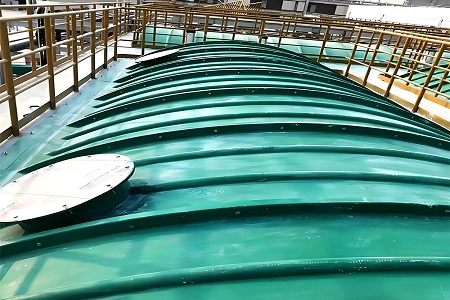
Fiberglass Hand Lay-Up Manufacturer
At Hebei GangLong Fiberglass, we specialize in the fiberglass hand lay-up process, a meticulous technique used to craft high-performance glass fiber reinforced plastic (GFRP) products. This process involves carefully layering fiberglass cloth and resin by hand to produce durable, corrosion-resistant, and lightweight products. Our expertise in fiberglass hand lay-up ensures the creation of robust solutions designed to meet the most demanding industrial requirements.
High Mechanical Strength: The hand lay-up method ensures that each layer of fiberglass is bonded securely, resulting in a material with high mechanical strength and rigidity. This makes our products ideal for applications that require heavy-duty support and long-lasting performance.
Corrosion Resistance: One of the major advantages of fiberglass is its resistance to corrosion. The hand lay-up process enhances this property, making our products perfect for environments prone to moisture, chemicals, or extreme weather conditions, where metal counterparts would typically degrade over time.
Design Flexibility: The hand lay-up process offers unmatched design flexibility. By manipulating the number of layers and resin types, we can produce fiberglass products in a wide range of shapes, sizes, and configurations to meet specific customer needs, from GFRP cable trays to custom grilles and pipelines.
Aesthetic Appeal: In addition to its strength and functionality, fiberglass hand lay-up allows for a smooth finish, providing an aesthetically pleasing look that complements both industrial and architectural applications.
Ease of Customization: The hand lay-up process is ideal for producing custom-made products, which is why we can easily tailor our GFRP products to fit unique project specifications. Whether you need a specific shape or a particular resin mix, we can create a solution that matches your exact requirements.
Anti-Aging Properties: Fiberglass hand lay-up products exhibit excellent anti-aging characteristics, making them ideal for long-term use in environments that involve exposure to sunlight, moisture, and chemicals. This means reduced maintenance costs and extended service life for our products.
Why Choose Hebei Ganglong for Your Fiberglass Hand Lay-Up Products?
At Hebei Ganglong Technology Co., Ltd., we take pride in our fiberglass hand lay-up expertise, using this process to produce high-quality products that meet and exceed customer expectations. Our skilled team, combined with state-of-the-art manufacturing technology, ensures precision and quality at every stage of production.
Whether you are looking for standard GFRP products or customized solutions, our fiberglass hand lay-up services provide a reliable, cost-effective way to meet your needs. Our team is committed to delivering products with exceptional mechanical properties, corrosion resistance, and long-term performance.
To learn more about our fiberglass hand lay-up products or to discuss your specific project needs, please contact us at [email protected]. We look forward to collaborating with you to create the perfect fiberglass solutions for your application.
FAQs about Fiberglass Hand Lay-Up
What is the hand lay-up method?
What is the process of GRP layup?
What is the difference between spray lay-up and hand lay-up composite processes?
Hand Lay-Up Process: This method involves manually placing fiberglass layers into a mold and applying resin using brushes or rollers. It provides high control over fiber placement and resin application, making it suitable for complex shapes and high-quality finishes. However, it is labor-intensive and has longer cycle times.
Spray Lay-Up Process: Also known as chop and spray, this method uses a spray gun to simultaneously apply chopped fiberglass and resin onto a mold. It is a more automated process compared to hand lay-up, which speeds up production and reduces labor costs. While it is efficient for producing large, simple shapes, it may not offer the same level of control over fiber orientation and surface finish as hand lay-up.
What is hand-laid fiberglass?
How to layup fiberglass?
What is the hand lay-up technique?
What is the hand lay-up process for fiberglass?
What are the advantages of hand lay up technique?
Low cost of setup: It requires minimal machinery or tooling, making it ideal for smaller production runs.
Flexibility: Custom shapes, sizes, and thicknesses can be created easily without complex molds.
Complexity: It is well-suited for creating intricate parts with varying thicknesses and contours.
Versatility: The technique works with different types of fiberglass fabrics and resins, providing adaptability to various industrial needs.
Low production volume efficiency: It’s excellent for prototypes or low-quantity production where automated methods might be cost-prohibitive.
What do you need to lay fiberglass?
Fiberglass fabric: Such as woven roving, chopped strand mat, or fiberglass cloth.
Resin: Typically polyester, epoxy, or vinyl ester resin.
Hardener/Catalyst: To initiate the curing process of the resin.
Brushes or rollers: To apply and spread the resin and ensure even distribution.
Mixing containers and stirrers: For combining resin and hardener.
Mold: A form or surface over which the fiberglass will be laid.
Release agent: Applied to the mold to prevent the fiberglass from sticking.
Scissors or a cutting tool: To trim the fiberglass fabric.
Protective equipment: Gloves, goggles, and respirators to handle resin and fiberglass safely.
How do you fiberglass step by step?
Cut the fiberglass: Measure and cut the fiberglass fabric according to the mold’s dimensions.
Mix the resin: Combine resin with the hardener/catalyst as per the manufacturer’s instructions.
Lay the fabric: Place the first layer of fiberglass fabric onto the mold.
Apply resin: Using a brush or roller, saturate the fabric with resin, ensuring all areas are covered.
Consolidate layers: Use a roller to remove air bubbles and ensure adhesion between fabric layers.
Add more layers: Repeat the process of adding fabric and resin until the desired thickness is achieved.
Cure the layup: Allow the layup to harden and cure. This may take several hours to days, depending on the resin type.
Remove from the mold: Once fully cured, carefully separate the fiberglass part from the mold.
Finish: Trim and sand the edges as necessary.
What materials are used in hand lay up?
Fiberglass fabric: Woven roving, chopped strand mat, or fiberglass cloth.
Resin systems: Polyester, epoxy, or vinyl ester resin.
Hardener or catalyst: Specific to the type of resin being used.
Gel coat: Optional, but often used to provide a smooth surface finish or a protective outer layer.
Mold release agents: To prevent the fiberglass from sticking to the mold surface.
What is the lay up method?
How many layers of fiberglass should you do?
How do you apply fiberglass layers?
Place a layer of dry fiberglass fabric onto the prepared surface.
Saturate the fabric with resin using a brush or roller.
Roll out air bubbles with a consolidating roller.
Repeat the process by laying the next fabric layer while the previous layer is still wet (wet lay-up).
Consolidate each layer to ensure bonding between layers and remove voids.
What is fiberglass lay up?
How do you lay fiberglass over foam?
Prepare the foam surface: Sand the foam to the desired shape and remove any dust.
Seal the foam (optional): Apply a thin layer of resin or paint to prevent the foam from dissolving if using a resin that can damage it.
Lay fiberglass: Place fiberglass fabric onto the foam surface.
Apply resin: Saturate the fabric with resin using a brush or roller, ensuring even coverage.
Repeat layers: Add additional layers of fiberglass and resin until the required strength is achieved.
Cure: Allow the fiberglass to cure fully before sanding and finishing.
How do you apply Fibreglass matting?
Apply resin: Spread a layer of resin over the surface.
Place the mat: Position the fiberglass mat onto the resin-coated surface.
Wet out the mat: Use a brush or roller to saturate the matting with more resin.
Roll the mat: Roll out air bubbles to ensure a smooth, even application.
Add layers: Continue applying resin and matting as needed.
What is the process of spray lay up?
Spraying a gel coat onto the mold (optional for surface finish).
Chopping fiberglass strands and spraying them with resin onto the mold surface.
Rolling the deposited material to remove air pockets and ensure bonding.
Adding additional layers as necessary for the desired thickness.
Allowing the laminate to cure before demolding the finished part.
What is fibreglass layup?
How thick is a fiberglass layup?
What are the advantages of hand lay-up?
Cost-effective for small runs: Ideal for low-volume production and prototypes, as it requires minimal equipment.
Flexible and customizable: Allows for easy adaptation to complex shapes and designs, making it suitable for custom parts.
Low tooling costs: Compared to automated processes, hand lay-up requires fewer tools and simpler molds.
Suitable for large parts: This process is effective for producing large composite structures, such as boat hulls or wind turbine blades.
Variety of material options: Works with different types of reinforcements (fiberglass, carbon fiber) and resins, offering a range of mechanical properties.
What are the disadvantages of wet lay up?
Inconsistent quality: Because it is manual, results can vary in terms of material thickness, resin distribution, and voids, leading to less uniform products.
Longer curing times: Wet lay-up typically requires a longer curing period compared to more advanced composite production techniques.
Labor-intensive: It requires skilled labor to lay the fibers properly and remove air bubbles, making it time-consuming.
Limited precision: It’s difficult to achieve precise control over fiber orientation and resin content, which can affect the final strength of the composite.
Lower performance: Wet lay-up results in higher resin content, leading to reduced mechanical properties compared to more advanced methods like vacuum infusion.
What does fibreglass feel like?
How many layers of fibreglass matting?
Can you hand lay carbon fiber?
Do you need a roller for fiberglass?
Evenly distribute resin across the fiberglass fabric.
Remove air bubbles, which can weaken the final composite.
Ensure full saturation of the fiberglass layers with resin, leading to better bonding and strength.
What is hand laid fiberglass?
What does fibreglass do to your hands?
What is fiberglass and why is it bad?
What are the three types of fiberglass?
S-glass (Structural glass): This type has higher tensile strength and modulus than E-glass, making it ideal for aerospace, defense, and high-performance applications.
C-glass (Chemical glass): C-glass is specifically designed for chemical resistance. It’s commonly used in environments where corrosion resistance is essential, such as in chemical processing equipment.
What does fiberglass do if you touch it?
What is the strongest type of fiberglass?
Is fiberglass stronger than wood?
What is the process of hand lay up fiberglass?
Preparing the mold: Clean and apply a release agent to the mold.
Cutting fiberglass fabric: Cut the fiberglass fabric or mat to the desired size.
Mixing the resin: Combine resin with the appropriate catalyst or hardener.
Applying fiberglass: Place the fiberglass fabric onto the mold, then use brushes or rollers to apply resin, ensuring the fibers are fully saturated.
Consolidating the layers: Use a roller to remove air bubbles and ensure good bonding between layers.
Building up layers: Continue adding layers of fiberglass and resin until the desired thickness is reached.
Curing: Let the composite cure at room temperature or with heat, depending on the resin type.
Demolding and finishing: Once cured, remove the part from the mold and trim or finish as needed.
Is fiberglass better than plastic?
ls fiberglass as strong as aluminium?
What is a fiberglass spray lay-up operation?
What is the difference between hand lay up and spray-up?
Hand lay-up: Involves manually placing layers of fiberglass fabric or mat onto a mold and saturating them with resin using brushes or rollers. Each layer is applied and consolidated manually, making it more labor-intensive but providing better control over fiber orientation and thickness.
Spray-up: Involves spraying chopped fiberglass fibers and resin onto the mold using a spray gun. It is a faster process compared to hand lay-up but can result in less precise fiber alignment and potentially higher resin content, which may affect the mechanical properties of the final part.
What are the advantages of spray lay up?
Faster production: Spray lay-up is quicker than hand lay-up because the chopped fibers and resin are applied simultaneously, reducing labor time.
Cost-effective for large parts: Ideal for producing large, non-structural parts like boat hulls, tanks, or decorative elements where precision is less critical.
Reduced labor: The automated spraying method reduces the need for skilled labor compared to hand lay-up.
Easier to apply to complex shapes: Spray lay-up can conform to complex molds and geometries more easily than hand lay-up.

